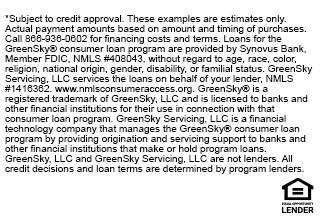The first electrical power system was developed in 1882 and since 1897, our country has set standards for electrical safety. GFCI outlets have been one of the most valuable electrical safety developments in history.
GFCI outlets were used as early as the 1960s, primarily around swimming pools and home exteriors. It was 1971 when the National Electrical Code (NEC) specified GFCI outlets for new residential construction.
GFCI Outlets Requirements Change in 2023
New national regulations now require trained and licensed electricians for electrical service and maintenance. This means handyman licensing in Arizona may come under scrutiny.
It was always a recommendation (not a requirement) that older home wiring receives regular electrical inspection for ongoing safety. Previously, GFCI receptacles have been required in:
- Basements/crawlspaces
- Bathrooms
- Garages
- Laundry rooms
- …and all areas where water is used
“In the new 2023 NEC, all 125- to 250-volt receptacles located inside a kitchen require GFCI protection,” says electrical instructor Jerry Durham. Section 210.8(A)(6) in the 2023 NEC requires ground-fault protection for all kitchen receptacles, regardless of their location or purpose.
The federal code now requires GFCI outlets in:
- All areas with sinks
- All plug- and cord-connected kitchen appliances
- All receptacles installed under eaves/roofs
- Areas in which HVAC (heating, ventilation, air conditioning) and refrigeration equipment are installed
- Boathouses/boat hoists
- Clothes dryers
- Dishwashers
- Home/outdoor – At least one
- Kitchen counter-mounted appliances including:
- Electric ranges/skillets
- Microwaves/microwave ovens
- Wall-mounted ovens
- Kitchen countertops
Older Homes May Need Rewiring
Prior to 2023, GFCI outlet upgrades were recommended for older homes. They were not legally required even though 68% of house fires are caused by electrical problems. If your home is more than 20 years old, it may be at risk for fire damage. Schedule an electrical inspection to determine if areas of your home need professional electrical service.
5 Top Causes of Electrical Fires in Older Homes
Running electrical cords under area rugs or carpeting is very dangerous and puts your home at high risk for fire. Appliances with frayed cords can ignite carpeting as well as curtains and floors.
The top five causes of older-home residential fires include:
- Outlets – Outdated electrical outlets and older appliances are the #1 cause of residential electrical fires.
- Light fixtures – Using the wrong wattage bulbs in lamps and light fixtures is the second most common cause of fires in homes. And yes, it’s romantic, but don’t put a handkerchief or other flammable materials atop a lampshade.
- Extension cords – Extension cords are a temporary fix, not a permanent solution. Daily-use appliances and electronics should be directly plugged into a wall outlet.
- Space heaters – This portable solution to a cold snap is fine if the appliance is operated and positioned safely. Space heaters should be at least 3´ away from all bedding, curtains, and furniture.
- Wiring – Today’s use of electronics is usually more than a good old house can manage. Outdated wiring in older homes is a leading fire hazard. Replacing electrical wiring to accommodate computers, gaming devices, wide-screen televisions, etc. increases safety from fire.
GFCI Outlet Upgrades in Arizona
An electrical inspection is an affordable way to determine if your electrical system is functioning safely. About twenty percent of Phoenix homes have older wiring that should be inspected. And in some areas of Maricopa County, 100% of the homes were built before or during the 1970s.
GFCI outlets have a lifespan. Even if your older home has GFCI outlets in place, they should be replaced after 15 years. Some show signs of problems after only five years of use. If you’re planning to invest or already live in a beautiful older home, it’s well worth the peace of mind to ensure its protection from fire.
Turn It On Electric specializes in electrical maintenance for older homes. Let’s prioritize your GFCI outlets and wiring this year. Contact TIO Electric to learn more.















